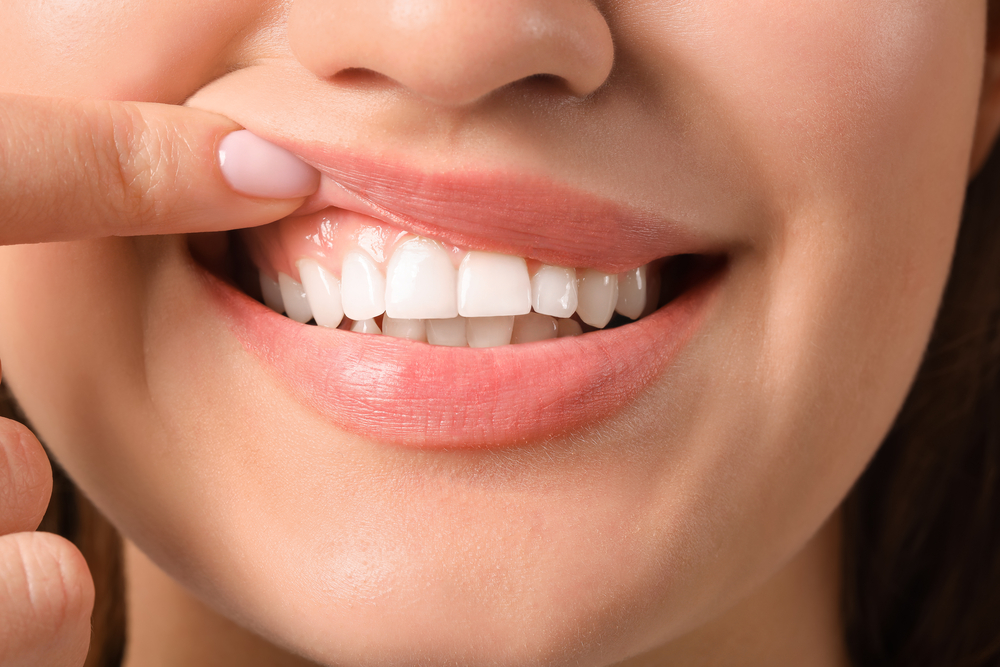Gum recession is a dental condition that affects millions of people worldwide. It occurs when the gum tissue surrounding the teeth pulls back, exposing more of the tooth or even the tooth’s root. This not only leads to aesthetic concerns but can also increase sensitivity and the risk of tooth decay and loss. Understanding the causes of gum recession, exploring treatment options, and implementing prevention strategies are crucial for maintaining oral health.
Causes of Gum Recession
Gum recession can be attributed to various factors, including:
1. Periodontal Disease: This is one of the most common causes of gum recession. Periodontal disease begins with gingivitis, an inflammation of the gums, and can progress to more severe conditions that affect the supporting structures of the teeth.
2. Aggressive Brushing: Brushing your teeth too hard or using a hard-bristled toothbrush can wear down the gum tissue. It’s essential to adopt a gentle brushing technique with a soft-bristled toothbrush to avoid damaging the gums.
3. Genetics: Some individuals may be genetically predisposed to gum recession. If your family has a history of gum disease, you may be more likely to experience similar issues.
4. Hormonal Changes: Hormonal fluctuations, such as those occurring during pregnancy, menstruation, or menopause, can make gums more sensitive and prone to recession.
5. Tobacco Use: Smoking or using other tobacco products can interfere with blood flow to the gums, hindering their ability to heal and increasing the risk of gum recession.
6. Clenching or Grinding Teeth: These habits can place excessive pressure on the teeth and gums, contributing to gum recession over time.
7. Poor Dental Hygiene: Inadequate oral care can lead to plaque buildup, which may cause inflammation and gum disease. Regular brushing, flossing, and dental check-ups are essential to prevent gum problems.
8. Misaligned Teeth: Teeth that are not properly aligned can create areas that are difficult to clean, leading to gum disease and recession.
Treatment Options for Gum Recession
If you are experiencing gum recession, various treatment options are available, depending on the severity of the condition:
1. Non-Surgical Treatments: Scaling and Root Planing: This deep-cleaning procedure involves removing plaque and tartar from below the gum line and smoothing the tooth roots to promote healing.
– Antimicrobial Treatments: Prescription mouth rinses or gels may be used to reduce bacteria and inflammation in the gums.
2. Surgical Treatments: – Gum Grafting: In cases of severe gum recession, a gum graft may be necessary. This procedure involves taking tissue from another area of the mouth (or using donor tissue) and attaching it to the receded area.
– Pinhole Surgical Technique: This minimally invasive procedure involves making a small hole in the gum tissue to reposition it over the exposed tooth roots without the need for sutures.
3. Regenerative Procedures: In some cases, a dental professional may recommend procedures that encourage the regeneration of gum tissue, such as the use of growth factors or tissue-stimulating proteins.
Periodontal and gum treatment encompasses a range of dental procedures aimed at preventing, diagnosing, and managing conditions affecting the gums and supporting structures of the teeth. This treatment is essential for addressing periodontal disease, which can lead to gum recession, tooth loss, and other serious health issues if left untreated. Procedures may include non-surgical options such as scaling and root planing, which remove plaque and tartar buildup below the gum line, as well as surgical interventions like gum grafting to restore lost tissue. Effective periodontal and gum treatment not only improves oral health but also enhances overall well-being, as research shows a strong connection between gum disease and systemic conditions such as heart disease and diabetes. Regular dental check-ups, good oral hygiene practices, and early intervention are vital components of maintaining healthy gums and preventing the progression of periodontal disease.
Prevention Strategies
Preventing gum recession is crucial for maintaining long-term oral health. Here are several strategies to help you protect your gums:
1. Maintain Good Oral Hygiene: Brush your teeth at least twice a day with a soft-bristled toothbrush and fluoride toothpaste. Floss daily to remove plaque and food particles from between the teeth and below the gum line.
2. Regular Dental Check-ups: Visit your dentist for regular check-ups and professional cleanings. Your dentist can monitor your gum health and detect any early signs of recession or periodontal disease.
3. Gentle Brushing Techniques: Use gentle strokes while brushing, and avoid aggressive scrubbing. Consider using an electric toothbrush with a pressure sensor to help maintain the right amount of force.
4. Avoid Tobacco Products: Quitting smoking and other tobacco products can significantly improve gum health and reduce the risk of gum recession.
5. Manage Teeth Grinding: If you grind your teeth at night, talk to your dentist about a custom night guard to protect your teeth and gums.
6. Healthy Diet: A balanced diet rich in vitamins and minerals supports gum health. Incorporate plenty of fruits, vegetables, and whole grains into your meals.
7. Childhood Dental Care: Establishing good oral hygiene habits early in life is essential. Parents should ensure that their children understand the importance of brushing and flossing, as well as the need for regular dental visits. Early childhood dental care can set the foundation for healthy gums throughout life.
Understanding gum recession is crucial for maintaining good oral health. By recognizing the causes and symptoms of gum recession, exploring available treatment options, and implementing effective prevention strategies, individuals can safeguard their gum health. Regular dental visits and proper oral hygiene practices, starting from childhood, are key to preventing gum recession and ensuring a lifetime of healthy gums. If you notice any signs of gum recession, such as increased tooth sensitivity or visible changes in your gum line, consult a dental professional promptly for evaluation and personalized treatment recommendations.



